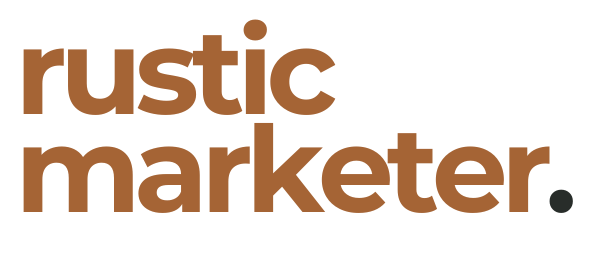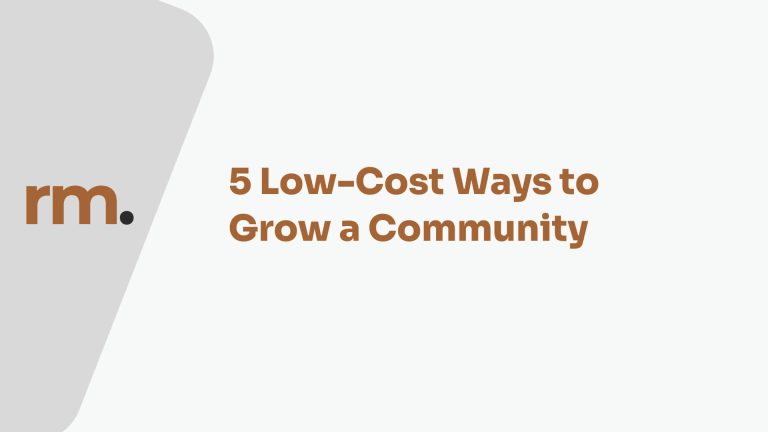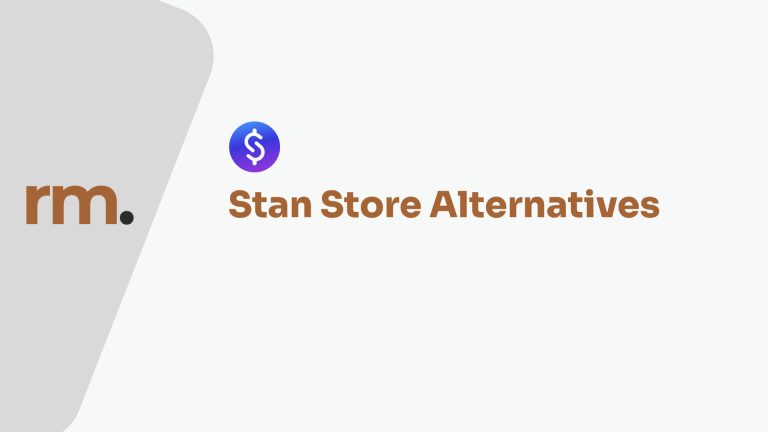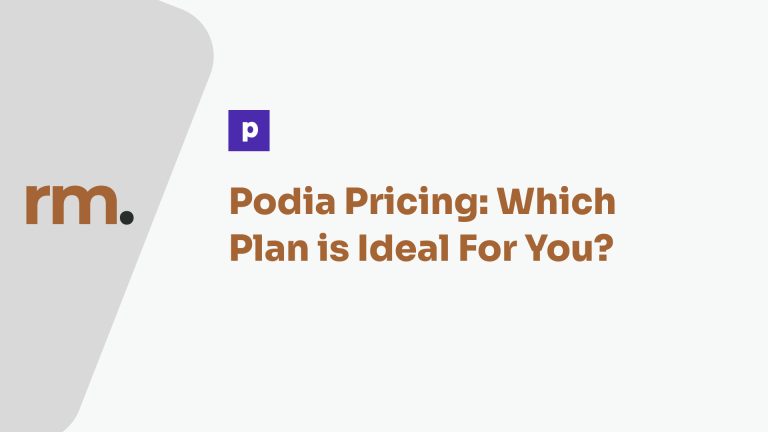The success of selling a digital product depends on how much value you provide to the audience. A core component of providing this value is to create digital products that your audience needs!
Digital products don’t have to be too complicated. It’s far simpler than it seems. Yet, you must not take it for granted. It’s important that you create a high-quality product that can solve your audience’s pain points.
This article will help you:
- understand the process of creating a digital product;
- learn different types you can choose from; and
- get inspired by reading about successful businesses selling digital products.
Steps to create digital products
Though the steps can vary based on the product type, the following steps apply to most.
Brainstorm Ideas
This should always be your first step. Write down what skills you have. You’ll notice they can be packaged into a digital product. The opportunities are endless!
For example, you may have the skills to:
- build complete websites on WordPress (product idea: WordPress themes, templates)
- cook healthy vegan meals (product idea: digital cookbook, recipes, video series)
- create icons & graphics (product idea: design library of icons)
- build simple software to solve specific problems (product idea: web or smartphone apps)
- capture amazing photographs (product idea: stock photos)
Find a product-market fit
Great, you’ve now come up with a list of ideas. Next, choose a profitable niche that can make use of your product. Here are some questions you might ask at this stage:
- What’s the market size?
- Are they looking for information online?
- How digital-friendly are they?
- Are they accessible online?
- Do they have an immediate problem they’d like to solve?
Next, do some research to identify their pain points. Browse through case studies of similar products offered in the niche, read through niche-specific forums and community pages or ask your audience directly.
Ideally, you’d need to find if the product you’re offering addresses the pain point and positively impacts their life. Here are some examples:
| Audience | Problem | Product |
| Local businesses | Increase the number of inquiries online | An actionable guide to optimize their website for local SEO |
| College students | Pay off their student loan debt | Online course helping you build multiple income streams through affiliate marketing |
| Diabetic patients | Consume the right food to better manage sugar levels | Meal plans for diabetic patients |
Determine pricing
By now, you should be able to determine the price point. How much are similar products priced? Do you want to charge a subscription or one-off fee?
Look for other similar products and their prices. A little bit of market research can go a long way in choosing the right price.
Create the product
There are four ways in which you can create digital products:
- Do-it-Yourself (DIY)
- Outsource
- Partner with an expert
- Crowdsource
The choice depends on your skillset, how complex the digital product is, the resources available and how quickly you want to launch it.
For example, if you are good at graphic design, you are likely to do-it-yourself. However, if you want to build a mobile app, but have little programming/coding knowledge, you’d consider outsourcing or partnering up with someone with programming skills.
Let’s look at each in turn.
Do-it-Yourself (DIY)
These are more common for informational products such as eBooks, online courses or audio packs. You draw in from your own experience to teach your audience how to solve a specific problem.
DIY is great if you have the skill set to create them on your own. These are applicable for designing printable templates, creating digital art or developing WordPress templates.
This is also a good option if you have a limited budget to create your digital product.
Outsource
Alternatively, you could get someone else to create the product for you. For example, if you are creating an eBook, you could write the content and outsource the designing part to a freelancer.
You can find them on platforms like Upwork, Freelancer.com, or Fiverr.
Though costlier than DIY, it can save you a lot of time if you find the right person for the job. You can extend this to other tasks as well like creating graphics, website templates etc.
Partner with an expert
This is applicable for informational products. It’s a powerful way to improve the value of the content you provide.
There are many niche experts who are generally happy to share their knowledge. Reach out to them. Record a video or conduct an interview. Repurpose the content as you see fit.
For example, if you’re creating an eBook on weight loss, interview a fitness coach on a specific topic and include the transcription of the interview on the eBook.
The great thing about this approach is that you can easily tap into the audience of the expert!
Crowdsource
This is not a popular option but can be very powerful. It’s about curating user-generated content into a neat little database. This is ideal if you have a large following on social media. You could get your audience to contribute entries by submitting a form linked to a database. This in turn can be converted into a digital product.
For example, the founder of Nomad List, Pieter Levels asked his Twitter followers about the best places to live and work remotely. He created a Google spreadsheet where they could submit the entries. This was popular which created the foundation for building a growing membership site.
Types of digital products to create
This very much depends on what you’re most comfortable with creating. If you’re a programmer or a no-code developer, you may already have different components configured. It’s now just a matter of packaging them into a sellable product.
Similarly, you could compile a guide to share your journey of solving a particular problem. Or create a library of graphic design templates that you created over the years etc. The options are endless!
Below are some common examples of digital products that you could sell. This should give you some inspiration:
- Templates for calendars, diaries, journals or day-planners
- Drawings of comic strips
- Collection of book notes from popular categories like entrepreneurship, health & fitness, startups etc.
- Social media banner templates for local business owners
- eBook/guides (eg: checklists, meal plans, recipes, cheatsheets)
- Stock photographs (eg: portraits, natural landscapes)
- Calculators (eg: loan repayment, lead generation ROI, freelance hourly rate calculator)
- A curated database of tools (eg: no-code platforms, project management tools, SaaS platforms)
- Website templates for local businesses
- Online courses (eg: Growing your Twitter account, generating leads with Facebook Ads)
Tools to create & publish digital products
For eBook
- Writing & Formatting: Google Doc, Evernote, Vellum, Draft2Digital, KindleCreate, Adobe InDesign
- Editing: HemingwayApp, Grammarly, ProWritingAid
- Publishing: Kindle Direct Publishing, Vellum
- Design: Canva, Crello
For online courses
- Screen Recording & Editing: Loom, Screencast-o-Matic, Camtasia
- Video Hosting: Vimeo, SproutVideo, Wistia
- Quizzes & Assessments: Google Forms, Formsite
- Course Management: Thinkific, Teachable, Learndash with WordPress, Google Classroom
For design templates
- Vectors, Art, Illustrations: Procreate, Photoshop CC, Inkscape, Adobe Fresco, Adobe Illustrator, Affinity Designer
- Prototypes, UI/UX, Web: Adobe XD, Sketch, Figma
- Invoices, Calendars, Planners, Banners: Canva, Crello, Stencil, DesignBold
For SaaS/Web Apps
- No-Code Websites/Apps: Carrd, Shopify, Webflow, Budibase, Pory, Adalo, Softr, Bubble
- Databases: Notion, Airtable
- Project Management: Basecamp, ClickUp, Bit.ai
- Chat: Freshchat, Zendesk
- Automations: Zapier, IFTTT, Integromat, Automate.io
- Analytics: Google Analytics
Real-life examples of digital products created
- Jennifer of Life is Messy and Brilliant blogs about creativity and bullet journalling, and offers both digital and physical products for the creative planner.
- Ralu Petrea at Outline Planner launched the paperless planner that took her one week to launch and two years to refine with a €499 initial investment. She is now making $4k/month selling her digital planners.
- Gauge Girl Training’s shop offers ebooks and meal planning guides that you can purchase online – as well as training apparel and gears.
- Wintercroft offers digital downloads of paper craft templates, which you can print out and assemble into masks.
Here’s a comprehensive list of digital products that you can create. Hopefully, this article gave you the foundation for you to start building your next digital product.



